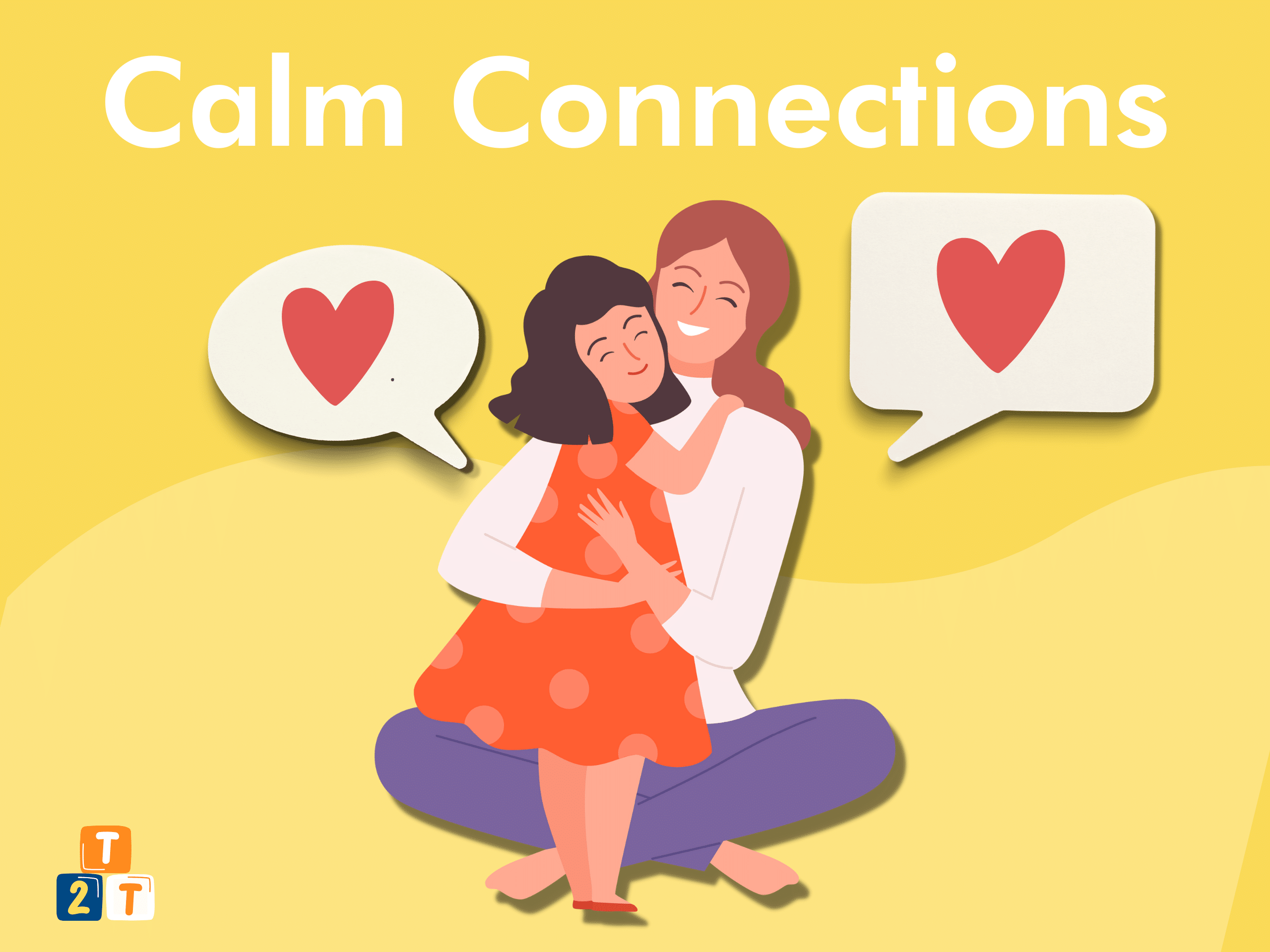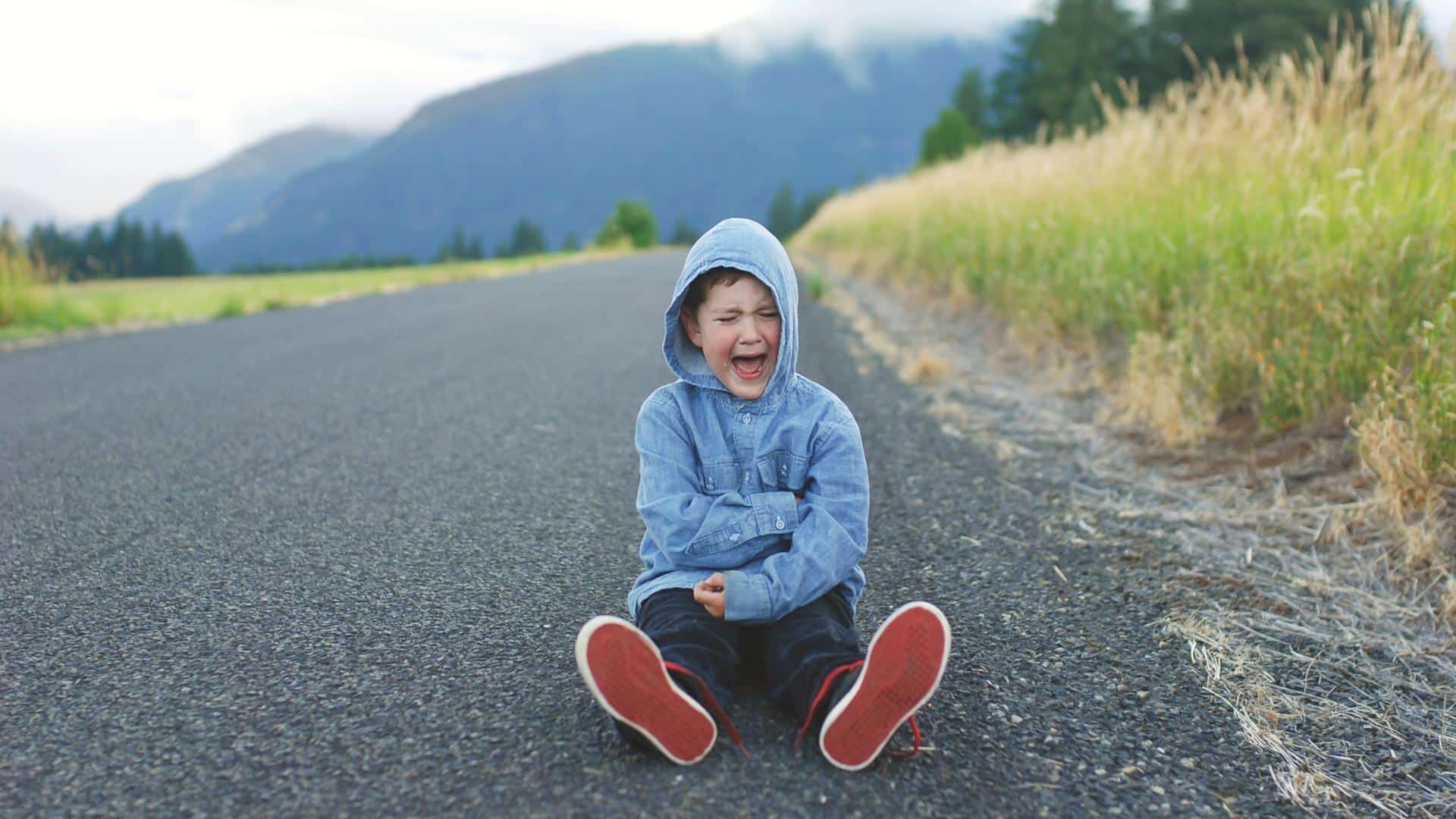So it’s happened. You’ve hit the ‘terrible twos’. But does it really have to be so… terrible? Despite what everyone claims… tantrums in 2 year olds will not define your year.
Here are my top tips to prevent tantrums from happening and the steps to take to appropriately handle any stray tantrums that may occur.
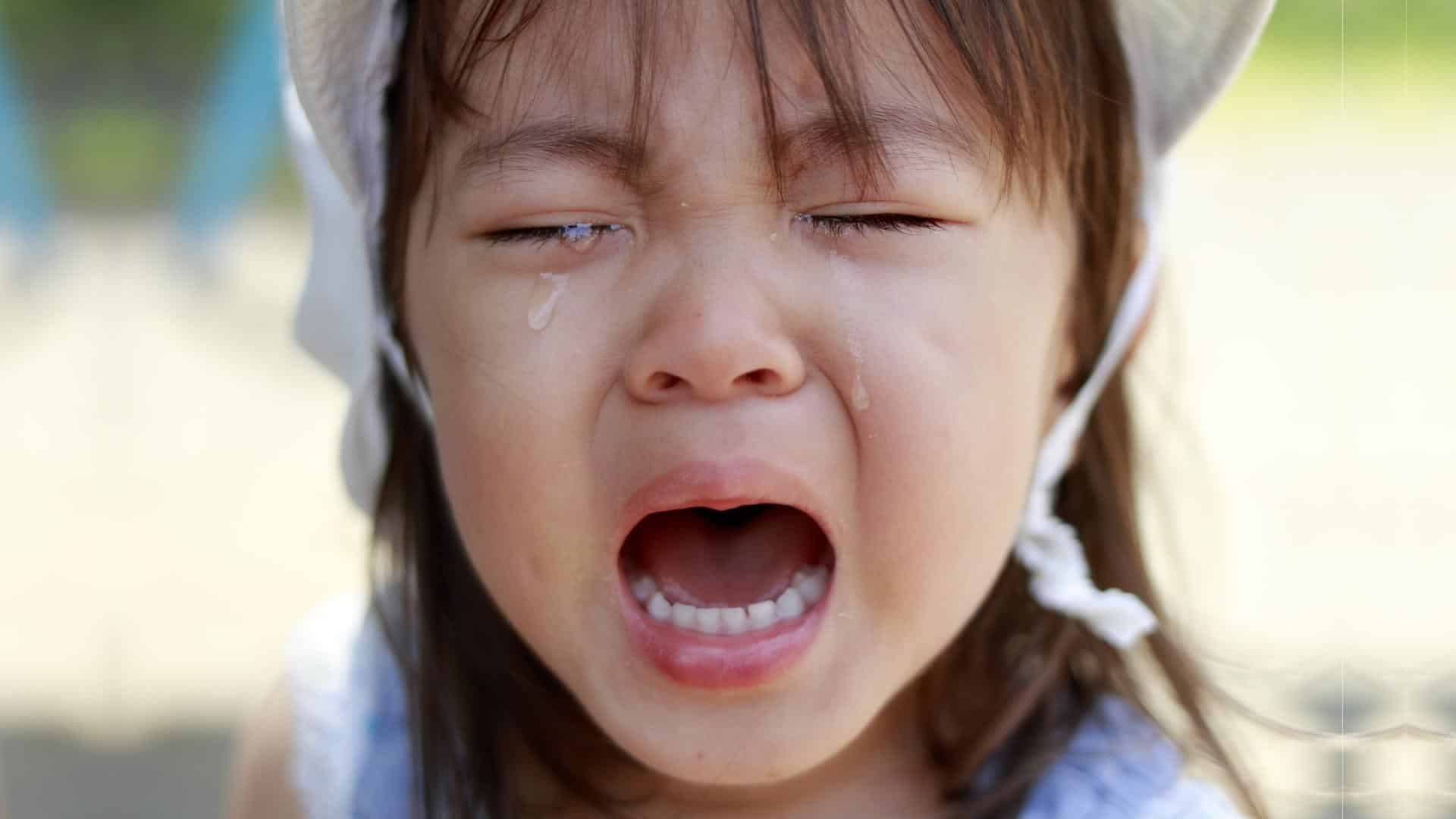
Table of Contents
Tantrums In 2-Year-Olds
What Is A Tantrum?
A tantrum is an eruption of emotion often born out of frustration or anger. They can result in aggressive behavior with your 2 year old kicking, screaming, hitting or biting to let out their frustrations and try to get what they want. They may also throw things and hold their breath for extended periods of time in protest as their social, emotional and language skills have not fully developed.
Is It Normal For 2 Year Old’s To Have Tantrums?
Yes, 2 year olds tantrums are a normal toddler behavior and part of your child’s development.
Tantrums in 2 year olds are emotional outbursts as a result of your child struggling to process their emotions and balance their growing independence desires. They can happen at anytime and are sometimes known as the terrible two’s.
REMEMBER: Healthy children of all ages are capable of having a tantrum… but if tantrum-like behavior is not handled properly, then their disruptive behaviors can continue for years to come.
How Do I Handle My 2 Year Old’s Tantrums
Dealing with temper tantrums in 2 year olds is never easy, especially when they happen in public. But being prepared and having a list of strategies to deal with tantrums in 2 year olds is your best plan to get through them safely and effectively.
If you find yourself in the middle of a 2 year old tantrum you need to:
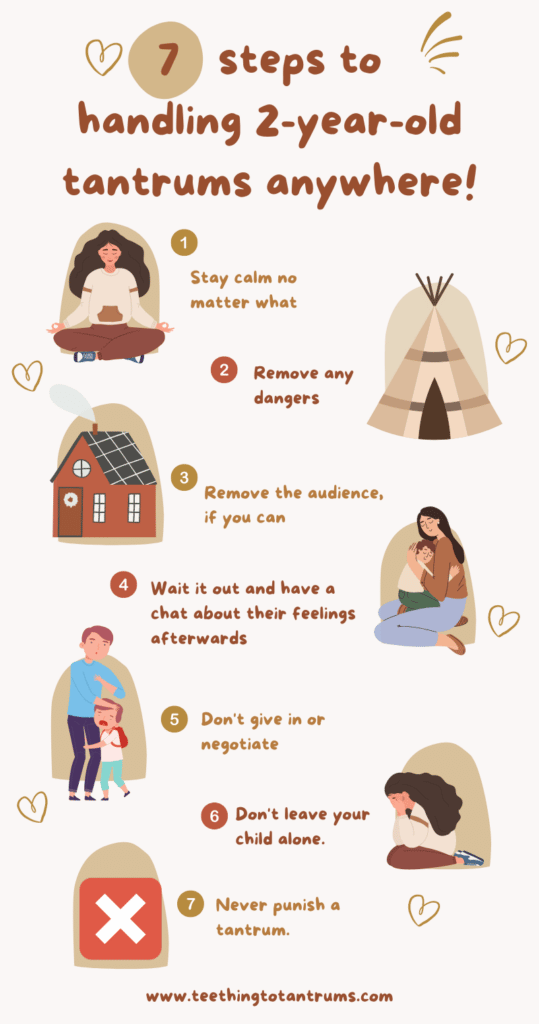
- Stay calm. This is the hardest part of handling severe tantrums in 2-year-olds. But taking a deep breath, staying calm, and not shouting will be the key to preventing a tantrum from escalating.
- Remove any dangers. If your 2-year-old is thrashing about and you fear they may hurt themselves… either move them to a safer place or if that is not possible, remove any items they may hurt themselves with.
- Remove the audience, if possible. Full-blown tantrums in 2-year-olds in public can be a terrifying and mortifying thing for parents to handle. But your 2-year-old will very quickly work out that you are more likely to give in if there is an audience around. Therefore, you must remain even more consistent during these tantrums and if you can, take your child to a place where there is no one to ‘perform’ to.
- Don’t give in or negotiate. And I mean NEVER give in to a tantrum. Even if part way through you feel you may have denied them something that they could have had or done… Once you have said ‘no’ you must see it through. If you do end up giving in to tantrums in 2-year-olds… you will reinforce to your child that this behavior gets results.
- Don’t leave them alone. While you may be tempted to walk away, do not leave your tantrum throwing 2 year old alone. If they will let you then hold them until they have calmed down, but if this is not possible then be present at a distance without engaging and wait for the tantrum to pass.
- Never punish. Tantrums in 2-year-olds should never be punished. Although you have to take a strong stance in dealing with a tantrum when they’re happening, you need to remember that your 2-year-old cannot help feeling the way they do but they do need your understanding and love once the storm is over.
- Comfort after the event. You cannot force a tantrum to come to an end. Nor can you expect your toddler to listen to you mid-tantrum. Therefore, wait it out and once it’s over, cuddle your little one, look at a book together, and have a calming and non-accusatory chat about what happened.
Want to stop your children from yelling, shouting & throwing tantrums... Whilst helping them listen to you and building a healthy strong relationship? Look no further than Calm Connections and transform your family’s life for years to come.
- Understand the best way to communicate with your child in different situations, so you feel more confident, relaxed, and in control... even during the most challenging moments. 💖
- Learn how to set clear boundaries and engage your child's cooperation 🌟
- Break free from tantrum cycles and promote healthy alternatives (without using punishment) 🎉
- Learn my trade secrets (collected over 40+ years in the childcare industry) to get your child to listen to you without shouting 🙌
- Promote kindness and honesty to prioritize a respectful relationship with your child ❤️
How To Prevent Tantrums In 2 Year Olds From Happening
Prevention is always better than reaction. And having some tricks up your sleeve to prevent toddler temper tantrums from happening in the first place is hugely beneficial for the whole family.
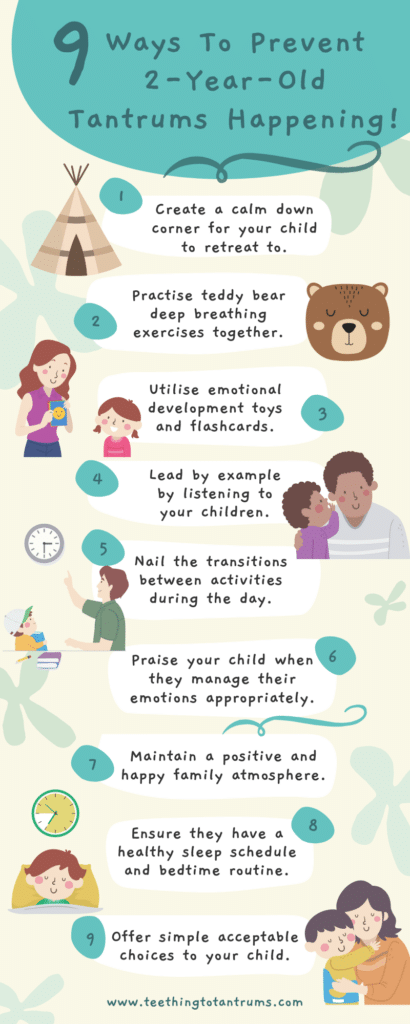
1. Have a calm down corner. Create a calm-down corner. Having a safe space where your 2 year old can go when they feel things are getting too much can be hugely beneficial to help them reset their emotions. Having a canvas tent, cushions and a few cuddly toys is a great place to start.
All children love a little house and a teepee is a versatile set up that you can use both indoors and out. This is an item tha will grow with your child's imagination and provide hours of fun for you and them. The perfect setting for nursery tea parties and a cosy snuggle spot for hanging out and reading together or alone.
2. Practice teddy bear breathing. This is a fun way to get your little one to practice deep breathing. Balance a teddy bear on their tummy and give it a ride with the rising and falling of your child’s breath. It is a great idea to make this part of the bedtime routine when they are lying down in bed.
Super soft, very cuddly and the perfect companion to young children, the GUND Teddy Bears never fail to be toy box favourites for years to come!
3. Utilise emotional development toys, books and flashcards. These are excellent ways to get your little one to talk about their emotions in a healthy way. They will give you an insight into how your child is feeling and will give them the essential verbal tools to express themselves in a healthy way. I love the book and plush toys included in A Little Spot of Emotion.
What is it? This book contains 8 different plush toys each displaying a different emotion - Anger, Anxiety, Peaceful, Sadness, Happiness, Love, Confidence and Tangled (Scribble) - to help children identify and process their emotions.
Why do I like it? This is a very helpful tool to teach children about emotions and how to handle them. Its fun plush toys make learning about emotions manageable and approachable. The Little SPOT of Emotion book is also ideal for children with social-emotional needs.
4. Lead by example by modelling good listening. Giving your toddler positive attention and leading by example and listening to your child will go a long way in avoiding unnecessary tantrums in 2 year olds.
REMEMBER: Your 2 year old’s comprehension is far beyond their ability to vocalise so you will need to do a lot of the talking for them while they listen and learn.
5. Nail the transitions. Your little one will often not want to stop what they are doing in order to go out, get ready for bed, or go to nursery in the morning. Therefore, knowing how to handle a transition will be an essential parenting tool to prevent tantrums in 2 year olds from occurring.
6. Praise when they handle difficult emotions acceptably. When your 2 year old successfully navigates a situation that could have resulted in a tantrum ensure that you give them plenty of praise and encouragement. Reinforcing a good outcome will definitely help to reduce tantrums moving forward.
7. Create a happy and positive family atmosphere. 2 year olds are very sensitive to their environment and the happier and calmer their surroundings are… the fewer tantrums they will have.
8. Ensure they have a healthy sleep schedule and a regular bedtime. At this age, your child can experience a 2 year sleep regression. Sadly, sleep and emotional behavior go hand-in-hand… So to help limit the possibility of overtiredness causing any tantrums, by having a consistent sleep schedule and bedtime routine.
9. Offer simple acceptable choices. As your little ones’ desire for independence grows offering them two simple, acceptable choices is a perfect way to diffuse frustration and to make them feel more in control eliminating an escalating tantrum.
Looking to get your little one to sleep quickly and effortlessly? Check out my Bedtime and Nap Cheat Sheet and master the art of making daytime naps and bedtimes as seamless as possible.
A bedtime & nap cheat sheet so good your little one will ask you to put them to bed...
Laura Williams "This is a life saver! I'm so glad I downloaded your bedtime & nap cheat sheet. My little one actually asked me to put him to bed last night! Unbelievable! Thank you so much!"
Click Here For The FREE Cheat Sheet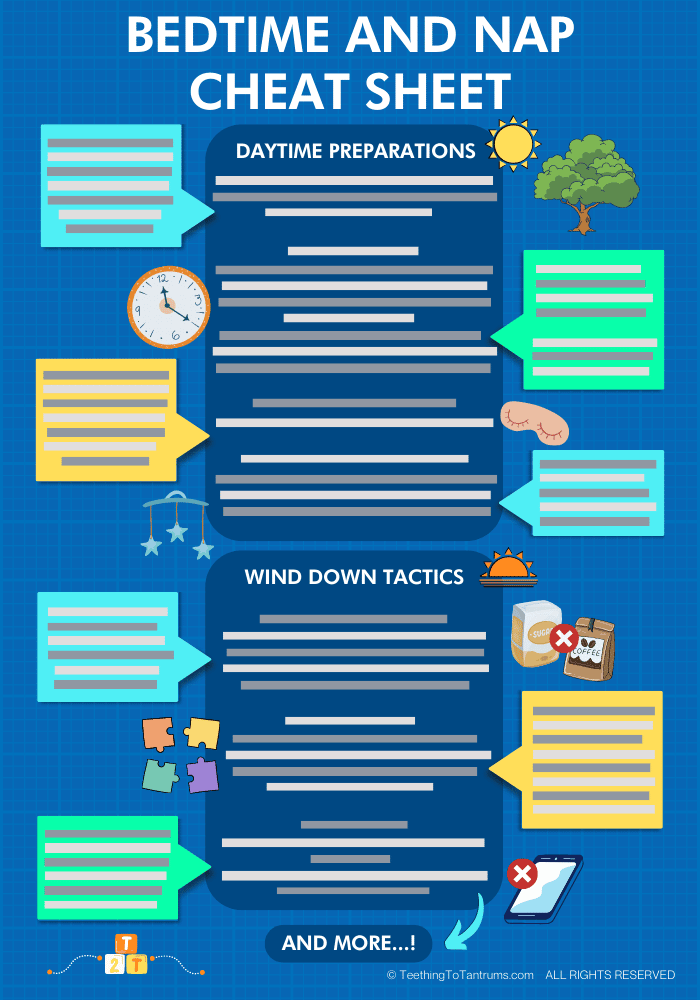
Why Is My 2 Year Old Throwing Tantrums?
There are lots of triggers for tantrums in 2 year olds. If your little one is suddenly having intense tantrums check to see if they are feeling any of the following:
1. They are struggling to process their emotions and feelings. Your 2 year old is now experiencing a whole range of emotions that they are unfamiliar with, such as frustration, anxiety and anger. These feelings can be very overwhelming and when allowed to escalate, they may result in a tantrum.
2. They have a new desire for independence. 2 year olds will now want to do more for themselves and have more control over their environment. However, if they are not offered opportunities to feel as if they have some control over their life, they may choose to stand their ground, become defiant and throw a tantrum to express their frustration.
3. They lack the language and social skills to express their wants. A 2 year old’s understanding of the world around them is far superior to their ability to express themselves. As a result, they can easily become frustrated by others not understanding what they want.
4. They are overtired. Overtiredness can be caused by an inconsistent nap schedule as well as a very busy day can easily trigger tantrums in 2 year olds.
5. They are hungry. We all know how irritable we can feel if we need food and a young toddler is no different! 2 year olds can easily feel cranky and short-tempered if they are hungry.
6. They are not getting their way. There are many occasions when tantrums in 2 year olds happen purely because they are not getting their own way. It is a young child’s default behavior to express frustration and anger.
7. It works. Finally, your 2 year old may be throwing daily tantrums because they work. If you give in to a tantrum, your child is more likely to use them to get the outcome they desire.
REMEMBER: While it is a normal part of your child’s development, there are things you can do to limit the number of tantrums your child has and it is very important that you deal with them consistently and in a rational manner.
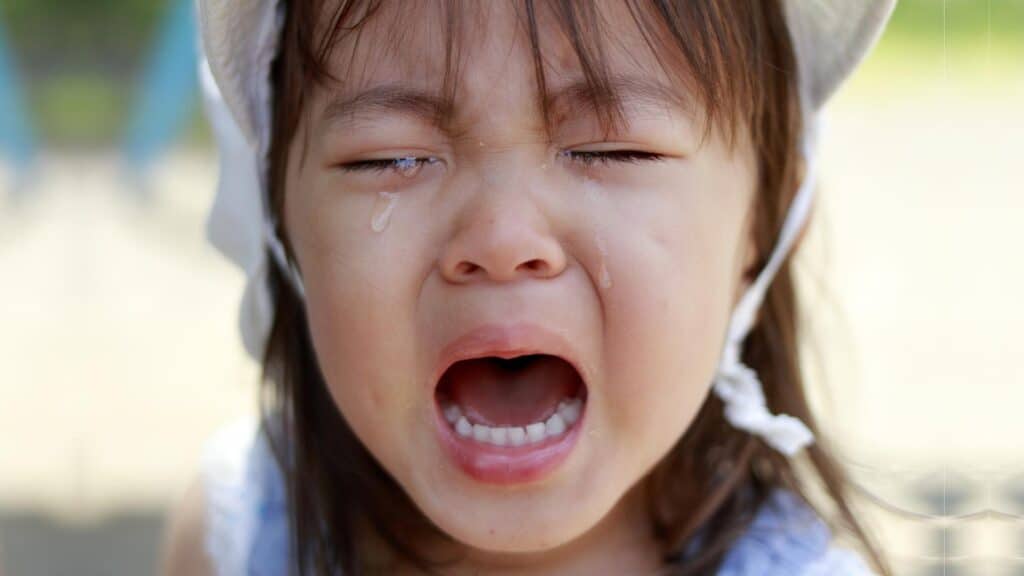
What Is The Difference Between A Tantrum And A Meltdown?
The main difference between toddler tantrums and meltdowns is that:
- A tantrum is a result of frustration or anger, where your child will still have some element of control over their behavior and the tantrum will usually end once they have got what they want.
- And a meltdown is a result of emotional or sensory overload, where your child will struggle to calm down and will only do so once they have been removed from the situation that caused the meltdown in the first place.
However, some tantrums can turn into meltdowns if they go on for a long time…
Characteristics Of A Tantrum:
- Temper tantrums in 2 year olds are goal-driven
- Your child will remain partially communicative
- They are a normal reaction to feeling frustrated, angry or not getting their own way
- They are driven by a desire for attention or a result of not being able to fully communicate what your child wants
- They remain under the child’s control
- Children will watch to see what your reaction is
- Children will yell but be able to negotiate
- Stop once your child’s goal has been achieved
- Your child can recover quickly once the tantrum is over
Characteristics Of A Meltdown:
- Meltdowns are not goal-driven
- Children are less verbal and communicative
- Meltdowns are an instinctive reaction to feeling overwhelmed or being unable to handle strong emotions such as fear, anxiety or sensory overload
- They are out of a child’s control or ability to reason
- They are usually long-lasting
- Meltdowns are often something children will not grow out of
- Children will not be able to process what is going on around them
- Children will not be able to negotiate with you
- They will struggle to calm down
- Children will often become withdrawn once a meltdown has ended
TOP TIP: If you suspect that your 2 year old is experiencing meltdowns instead of tantrums, click here to get specific advice on how to handle emotional meltdowns in young children.
Frequently Asked Questions About Tantrums In 2 Year Olds
Need more advice about temper tantrums in 2 year olds? Get the answers to the most common questions here:
When Should I Worry About My 2 Year Old Tantrums?
In some cases, frequent tantrums in 2 year olds can be an indication of an underlying condition linked to the child not being able to process emotions effectively.
Whilst rare, if you notice any of the following signs, then I would advise having a chat with a medical professional to see if an emotional assessment would be useful:
- Get down to their level and make eye contact before you start talking.
- Give clear uncomplicated instructions
- Pick your battles
- If you do offer up a consequence then always follow through
- Offer a couple of acceptable simple choices (a way out)
- Always look at things from your toddler’s perspective it may help you understand why they are resisting.
Should You Ignore Temper Tantrums?
Yes and no…
While you should never engage and negotiate with a toddler when they are having a tantrum… you should definitely stay physically present to ensure that they do not hurt themselves.
Your body language will do the ignoring for you.
Appearing to be seemingly engaged in doing something else like reading a magazine, looking at your phone, continuing with your shopping or preparing a meal, will give your 2 year old the vital message that you are not phased by the tantrum and that it will not get your attention.
When Do Tantrums Stop?
Toddler tantrums are common between the ages of 1 and 3 but can continue into the pre-school years in some children or in those where tantrum behavior has gotten them what they want.
Tantrums will usually be at their peak between 2 and 3 years of age but they will have mostly ended by the time children turn 4.
Therefore, you need to teach your child how to listen by giving them the opportunities to actively listen and follow instructions.
How Can I Stop My Two Year Old’s Tantrums And Hitting?
If your 2 year old is hitting out when they have a tantrum you need to take swift action and address the issue. Make sure that your 2 year old knows that hitting is never allowed by saying ‘No hitting. Only respectful touches are allowed.’
If your child is uncontrollably hitting, hold them firmly from behind, keeping their arms by their side and say that you will only let go once they calm down.
Once the tantrum has passed, talk about how hitting people is not an acceptable way to behave and offer them alternative options like hitting a cushion when they feel angry and using words to express their frustration and anger.
What Do You Do When Your 2 Year Old Screams At You?
Firstly, don’t ever scream back or verbally discipline your toddler when they’re throwing a tantrum. They are screaming at you to get a reaction… so the most powerful weapon you have is not to react.
Keep your voice calm and refuse to talk about the issue until they bring down the volume and use their ‘quiet’ voice. Encourage them to come and sit in the calm-down corner where you can help them express their feelings in an acceptable manner with positive behavior.
It is important that you take this time once the screaming has stopped to reinforce that they will have your attention if they speak and behave respectfully.
Is Attention Deficit Hyperactivity Disorder To Blame?
You will only know if attention deficit hyperactivity disorder (ADHD) is contributing to tantrums in 2 year olds if you consult a child psychologist or child development expert.
When To Seek Help For Tantrums In 2 Year Old
In some cases, temper tantrums in 2 year olds can be an indication of an underlying condition linked to the child not being able to process emotions effectively.
If you notice any of the following signs, or if your child is regularly engaging in specific types of tantrum behaviors, then I would advise having a chat with a behavioral pediatrician or developmental pediatrician to see if an emotional assessment would be useful:
- Tantrums happen more often, are getting worse and last longer.
- Your child struggles to calm down after an outburst
- Tantrums regularly last longer than 15 minutes.
- Your child tries to hurt themself or others.
- Your child always opposes you, argues a lot and hardly ever cooperates with you even when given acceptable choices.
Further Reading
Toddler tantrums are a normal part of childhood, but they should not be dominating your life. Read these articles to help you better understand and manage temper tantrums in a healthy and productive way:
- 2 Year Old Tantrums
- 3 Year Old Tantrums
- 4 Year Old Tantrums
- 5 Year Old Tantrums
Need More Parenting Help?
- Download our FREE Bedtime & Nap Sleep Cheat Sheet. It’s a free, easy-to-use and proven formula designed for parents of 0-5 year olds to master the art of consistently undisturbed and restful sleep without the yelling, nagging or exhausting long-winded evenings.
- Check out our Parenting Toolbox. You’ll get access to expertly-chosen products that you can guarantee are the best for your little one and your wallet.
- Are you looking for personalized guidance to navigate the challenges of parenting? I offer 1-on-1 consultations to bring you tailored strategies and actionable advice to help support your child's growth and well-being with confidence.

A bedtime & nap cheat sheet so good your little one will ask you to put them to bed...
Laura Williams "This is a life saver! I'm so glad I downloaded your bedtime & nap cheat sheet. My little one actually asked me to put him to bed last night! Unbelievable! Thank you so much!"
Click Here For The FREE Cheat Sheet
